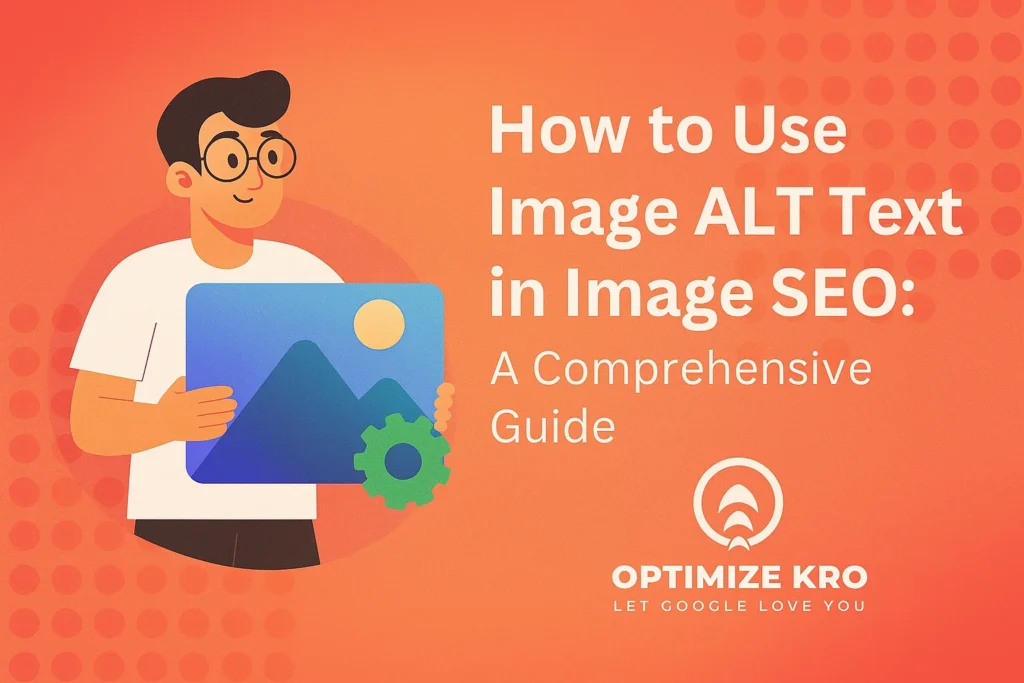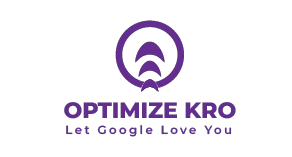In the ever-evolving world of SEO, image optimization is often overlooked, despite its significant impact on overall site performance. One crucial aspect of image SEO is the use of Image ALT text. Alt text (Alternative text) helps search engines understand the content of an image, making it more accessible and easier to index. In this guide, we’ll explore how to use Image ALT text effectively for better image SEO, improve user experience, and enhance website rankings.
- 1. What is Image ALT Text?
- 2. Why Image ALT Text is Important for SEO
- 3. How to Write Effective Image ALT Text
- 4. Best Practices for Image ALT Text
- 5. Common Mistakes to Avoid in ALT Text
- 6. Using Image ALT Text for Accessibility
- 7. How Image ALT Text Affects User Experience
- What Our Clients Say
- 8. Image ALT Text and Site Ranking
- 10. Conclusion

1. What is Image ALT Text?
Image ALT text, or Alternative text, is a short description added to an image’s HTML tag that explains the content or function of an image on a webpage. It serves as a replacement for images that fail to load and provides context to search engines and visually impaired users who rely on screen readers.
An example of an image tag with ALT text:
htmlCopyEdit<img src="dog.jpg" alt="A golden retriever playing in the park" />
In this example, the ALT text (“A golden retriever playing in the park”) describes what the image is about.
2. Why Image ALT Text is Important for SEO
Image ALT text is critical for several reasons:
Search Engine Optimization (SEO)
Search engines like Google rely on ALT text to index and rank images. Although Google has made strides in understanding images through AI, it still needs context to understand what the image represents. ALT text provides that context, allowing search engines to index images properly and rank them in relevant searches.
User Experience (UX)
ALT text improves website accessibility, especially for users with visual impairments. Screen readers use ALT text to describe images to blind or visually impaired users, enhancing their experience.
Image Search Rankings
Images can appear in Google’s image search results. Proper ALT text ensures that your images appear in relevant search queries, increasing your chances of driving organic traffic to your website.
Read More:
How to Use Image File Name in Image
How to Use Image Compression in Image SEO
Best Image Dimensions for WordPress for SEO Optimization
Best Image Format for SEO in WordPress
3. How to Write Effective Image ALT Text
Writing effective image ALT text is an art that requires both creativity and technical understanding. Here are some key strategies for crafting ALT text:
Be Descriptive and Specific
The ALT text should describe what is visually present in the image. Use specific and clear descriptions that give users and search engines context. Avoid vague terms like “image” or “picture” since they do not add value.
Example:
- Good ALT text: “Close-up of a cup of hot coffee with latte art on a wooden table”
- Bad ALT text: “Coffee image”
Incorporate Keywords Naturally
Incorporating keywords into the ALT text helps with SEO, but don’t overdo it. The primary goal is to describe the image in a way that makes sense to both users and search engines.
Example:
- Good ALT text: “Healthy avocado toast with tomatoes on a plate”
- Bad ALT text: “Avocado toast recipe healthy nutrition diet”
Avoid Keyword Stuffing
While it’s essential to use keywords, avoid stuffing them into ALT text unnaturally. Keyword stuffing can result in penalties from search engines.
Be Concise
ALT text should be concise, ideally between 5 to 15 words. If the description is too long, it could confuse both users and search engines. Aim for clarity and brevity.
Use Proper Grammar and Punctuation
ALT text should be written in proper grammar and punctuation. Avoid using all caps or unnecessary punctuation marks. This makes the text easier for screen readers to process and read aloud.
Contextual Relevance
Ensure the ALT text is contextually relevant to the content surrounding the image. The text should fit the narrative of the page and add value to the overall user experience.
4. Best Practices for Image ALT Text
Here are some best practices for optimizing your image ALT text for both SEO and user experience:
| Best Practice | Description |
|---|---|
| Be descriptive | Use clear and detailed descriptions that explain what the image is about. |
| Keep it concise | Aim for 5-15 words that clearly describe the image. |
| Use relevant keywords | Include keywords, but naturally and sparingly. Avoid keyword stuffing. |
| Avoid using ‘image of’ | Don’t start ALT text with “image of” or “picture of”; it’s redundant. Just describe the image. |
| Make it accessible | Always ensure that the ALT text is helpful for users with disabilities who rely on screen readers. |
| Contextual relevance | Ensure the ALT text fits the content of the page and adds value to the topic being discussed. |
5. Common Mistakes to Avoid in ALT Text
While writing ALT text seems simple, many website owners make mistakes that can hurt both their SEO and user experience. Here are some common mistakes to avoid:
1. Using Generic ALT Text
Generic ALT text like “image” or “photo” does nothing to help SEO. Always describe the content of the image to provide value.
Example:
- Bad ALT text: “Image of a dog”
- Better ALT text: “A cute brown dog playing with a ball in the yard”
2. Overusing Keywords
Keyword stuffing not only damages readability but also violates Google’s guidelines. Make sure your ALT text reads naturally, with keywords placed sparingly.
Example:
- Bad ALT text: “Best running shoes for women, running shoes, running shoes reviews”
- Better ALT text: “Top-rated running shoes for women with good arch support”
3. Writing Too Long ALT Text
Long ALT text can confuse search engines and screen readers. Stick to concise descriptions that are easy to process.
Example:
- Bad ALT text: “A very long and detailed description of a sunset over the ocean with a boat in the distance and seagulls flying above”
- Better ALT text: “A sunset over the ocean with a boat and seagulls”
4. Ignoring Decorative Images
For images that are purely decorative, it’s best to leave the ALT text empty (i.e., alt=””). This signals to screen readers that the image does not provide meaningful content.
6. Using Image ALT Text for Accessibility
Incorporating image ALT text significantly improves accessibility. People with disabilities, particularly those who are blind or visually impaired, rely on screen readers to navigate the web. These devices read the ALT text aloud, allowing users to understand what the image represents.
Best Practices for Accessibility:
- Describe the function: For functional images (e.g., buttons or icons), describe their purpose (e.g., “Submit button”).
- Avoid redundancy: If an image’s purpose is purely decorative, leave the ALT text empty.
- Context matters: Ensure the ALT text makes sense within the context of the page, as the same image may have different meanings depending on its placement.
7. How Image ALT Text Affects User Experience
Image ALT text impacts user experience by providing context to all users, including those with visual impairments. Screen readers rely on ALT text to describe images, which is essential for blind users to fully comprehend the content of a page.
Moreover, if an image fails to load, the ALT text will appear as a fallback, ensuring that users still have some understanding of the image’s content.
What Our Clients Say
Trusted by contractors and local businesses for proven Local SEO Services.
John M. – General Contractor
“These guys transformed my Google Maps ranking. More calls, more local leads, and better visibility!”
Sarah L. – Roofing Business
“Within 3 months, my business went from page 3 to the top 3 listings. Highly recommend their Local SEO service!”
David K. – Plumbing Services
“Affordable and effective SEO. My local service calls doubled in less than 90 days.”
8. Image ALT Text and Site Ranking
Although ALT text alone doesn’t guarantee high rankings, it plays a significant role in SEO. Search engines rely on ALT text for indexing images and determining relevance. Images with optimized ALT text have a better chance of appearing in search results, both in organic listings and in image search.
Moreover, proper use of ALT text enhances page relevance, which indirectly boosts the ranking of the page. High-quality content, user engagement, and relevant ALT text can help improve a page’s SEO performance.
ALT text should be concise, typically between 5 to 15 words, describing the image clearly without being overly detailed.
No, each image should have unique ALT text that describes its content accurately. Duplicate ALT text can confuse search engines and hinder SEO efforts.
While it’s important to use keywords, they should be incorporated naturally. Keyword stuffing can hurt SEO and make the ALT text sound unnatural.
For purely decorative background images, leave the ALT text empty (alt=””). This prevents unnecessary information for screen readers.
Yes, optimized ALT text helps improve image rankings in search engine results, especially in Google’s Image Search.
Image file names help search engines understand the content of the image, contributing to higher visibility in search results.
Use descriptive, keyword-rich file names, separated by hyphens (e.g., “best-landscape-designs.jpg”).
Yes, include relevant keywords to help search engines associate your images with the content on the page.
It’s better to use hyphens instead of underscores as Google reads hyphens as spaces, making it easier to parse the words.
It’s best to avoid capital letters as URLs are case-sensitive, and lowercase is standard.
Make sure the name is concise, descriptive, and includes keywords relevant to the image content.
10. Conclusion
Incorporating effective Image ALT text is a powerful tool for improving both SEO and accessibility. By following best practices such as using descriptive and concise ALT text, avoiding keyword stuffing, and ensuring contextual relevance, you can significantly enhance the user experience while improving your site’s visibility in search engines.
ALT text is not just about SEO; it’s about creating an inclusive web experience for all users, regardless of their abilities. With the right approach, you can optimize your images and boost your website’s overall performance.

Gulfam Qamar is a seasoned Local SEO expert with a proven track record of helping businesses boost their online visibility and dominate local search results. With deep expertise in Google Business Profiles, on-page optimization, and local citation strategies, Gulfam helps brands connect with nearby customers and grow sustainably. When he’s not optimizing websites, he’s sharing actionable SEO tips and insights to empower small businesses in the digital space.

